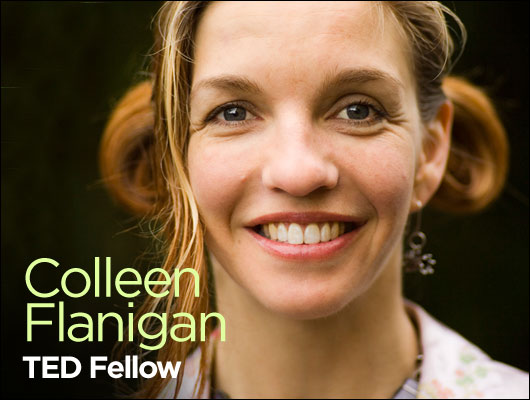
What is the coral crisis about?
We are at a critical stage in coral endangerment. Some predict that most corals will be gone by 2050. Reef ecosystems are the most genetically diverse on the planet, providing habitat for more the 25 percent of marine species.
It’s important to know corals are not rocks, but complex organisms: invertebrate animals with a symbiotic algae partner giving them their brilliant colors and providing them food through photosynthesis. Coral polyps feed at night also, but they rely on this plant partner to survive. When the temperature rises 1 degree Celsius higher than the hottest yearly average, corals are at risk of dispelling their algae partners — a process known as bleaching.
Corals are also at risk of damage from pollution, poor fishing practices, tourism, and ocean acidification, which weakens corals’ ability to build its exoskeleton with calcium carbonate.
What’s your background, and how did you become involved in creating underwater sculptures that would form living coral reefs?
I’m a very tactile maker with a background in design, mixed-media sculpture and metalworking. I also work with ceramics, textiles and installation.
During a transition in my life, I attended the Ecowave 2003 Sustainable Architecture conference in Oakland and encountered the architect Wolf Hilbertz, who developed a mineral accretion technique for growing coral reefs using metal and electricity, known as Biorock®. The way the process works is that you run low-volt directed current through seawater. The electrolysis actually pulls in minerals — calcium carbonate, magnesium hydroxide — which deposit onto a metal framework, creating a very hard mineral surface. The process helps give corals skeleton materials so they can use their energy for other vital activities, like reproduction. Corals on these sculptures can grow two to six times faster than wild corals on their own, and they can survive higher temperatures caused by global warming, according to studies by the Global Coral Reef Alliance and their affiliate researchers.
Coral fragments are planted onto the Biorock framework, and wild corals also settle on the substrate. This helps to repopulate and rebuild corals and reefs where they’ve been degraded by temperature rise, pollution and ocean acidification, or damaged by dynamite fishing, trawling, and reckless development. Biorock® projects are already flourishing in Indonesia because of great partnerships.
When I first learned about Biorock®, I didn’t know that corals were dying, but I saw immediately that the process is very much like electroforming, electroplating metal onto forms, which I was already doing. I am also a welder, gardener, and have always layered materials and concepts, so immediately I felt a connection with this life supporting creative work. I care deeply about plants, animals and restoring balance. Recognizing that my skills and interests perfectly fit with this form of living art, I had a visceral “a-ha!” moment, a true, “I have to do this!” So I learned to scuba and went to Bali to learn how.
How does Biorock go on to improve ecosystems?
Once corals are destroyed by dynamite fishing, for example, as was the case in Pemuteran, rebuilding reefs is the best way to shift from short-term destruction to long-term cultivation. I learned how the technology worked and saw the positive effects of coral restoration. I helped to weld and plant some of Wolf’s designs, and also created a sculpture that is now 8 years old and overgrown with coral. I saw it again in 2009 when I returned to make another small sculpture. As corals grow, fisheries are restored and shorelines protected from storm damage. This benefits the whole community — the fishermen, tourists and resorts. Everyone starts to have this new relationship with the ocean and marine life, and people rally to create marine protected areas, allowing surrounding corals to grow, too. It’s art and science and technology and community coming together to make an environmental impact.
But the Biorock technique works as uniformly shaped cages. Why make beautiful sculpture?
My underwater sculptures bring visibility to the problem. It’s a way of sparking interest in coral restoration, whether it’s people who might dive to see the sculptures, or those who are just fascinated by the idea. Yes, the sculptures and Biorock cages serve the same technical purpose, but if you are snorkeling or diving, it’s sad to see a completely unattractive, cagey, boxy thing just thrown down there. I envision more sculptures that are beautiful to look at, even as they eventually grow over, art turning into nature. Creating forms that will either meld into the seascape or stand out in unique juxtaposition, all the while recreating life, is what attracts me to this effort. The art offers life support and aims to transform and heal suffering.
The sculptures also offer a way for people to interact with a marine area even when an area is protected from fishing. This generates local income and is a proactive investment in coral conservation. Wherever in the world we do a project, we need to inspire people to commit to caring for them. I have a vision to create a Biorock® coral conservatory that is beautifully planned and designed to be both a coral refuge, as well as a place of study, propagation and contemplation. Not a rush-rush snorkel or dive location, but more like a Japanese garden, a place for underwater meditation and quiet coral gardening, a creative, relaxing, beautiful space for wonder and discovery. It will be a seascape that complements the environment with its undulating natural forms. People can visit this intimate conservation site that serves coral ecosystems and people seeking a peaceful retreat off the beaten path.
Tell us about your Kickstarter campaign and the project it’s supporting.
The campaign is called “From the Shore to the Seafloor: Living Sea Sculpture Deploys.” We are raising money to return to Mexico and install a Living Sea Sculpture in the underwater museum MUSA, in the National Marine Park of Cancun, Mexico. Many of the corals on the neighboring reefs here have been damaged by too much tourism, and MUSA, which features over 400 underwater sculptures, provides an alternative attraction that lures tourists away to give reefs time to recover. We created the 15-by-6-by-9-foot Biorock sculpture inspired by DNA helices last summer. Due to a contract hangup, we had to delay. Now we aim to deploy during May and June when weather is optimal. Once it’s installed, it can be visited by snorkeling. It will serve as a coral nursery, scientific biodiversity study, and underwater classroom.
We are trying to raise $35,000 to finish the project. Our Kickstarter deadline is March 14th. A filmmaker, Mike Gerzevitz, has been documenting the project from start to finish; he’ll be shooting more footage for a documentary. Lots of people don’t know or care about corals, so it is important to get this narrative to as many people as possible.
Sometimes you dress up as characters and talk to people. How does that fit in with the rest of your work?
I have two socio-ecological alter egos. I call these characters “interactivists” because they roam around in public, making social contact, having dialogues with people about being resourceful in relationship to the environment. As Amphitrite, goddess of the sea, I give talks about coral restoration and have done coral restoration reenactments with kids and adults. Miss Snail Pail is about a healthy alternative to pesticides. Rather than using pesticides to poison snails, she eats snails that she collects in the garden as a local protein resource. Almost everyone who talks with Miss Snail Pail is ready to go out and collect their snails and cook them for dinner…or eat least consider it. These characters are art projects that light people up and open them to conversation.
How has being a TED Senior Fellow affected you and your work as a coral conservationist and artist?
I knew that to accomplish Living Sea Sculpture dreams, I could not do it alone and wanted to be immersed in a think tank of “ideas worth spreading.” TED helps get my work into the public. The Fellows coaching program, SupporTED, helps me break out of my comfort zone. And with the other Fellows acting as peer mentors, the TED Fellows team and TED attendees as mentors and networks, being a Fellow exponentially gives you connections and community to manifest big dreams.
As a Senior Fellow, I get to develop a project — the Living Sea Sculpture in Mexico — and attend more conferences, which means I have time to form deeper relationships with the TED community and Fellows. I have received publicity, gained the courage to launch Kickstarter campaigns, gave a TEDU talk at TED2012, and am co-organizing the upcoming TEDxMonterey Sea Change this April.
TED helps me take bigger risks. Having TED validate my multi-faceted life gives my work more visibility, credibility and reach, and strengthens my resolve to follow my authentic path.
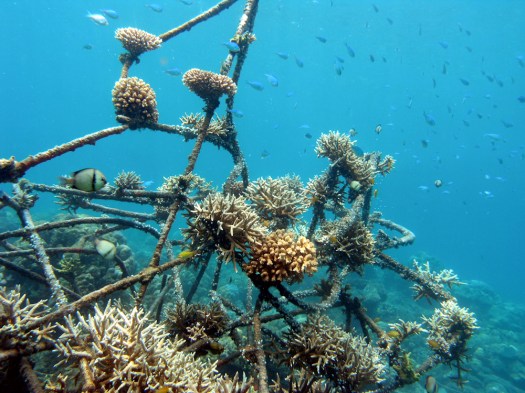
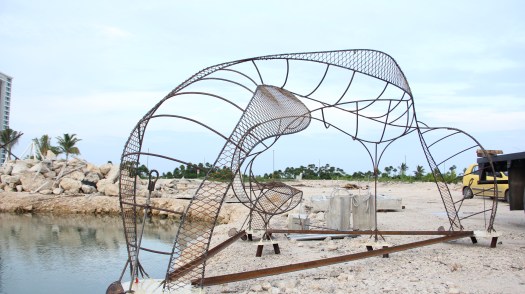
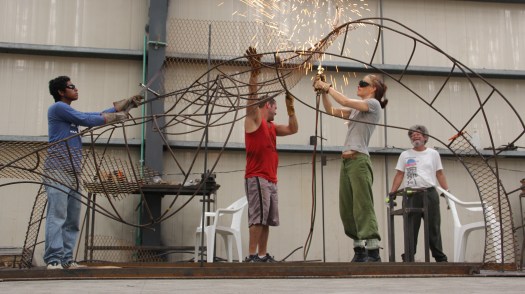
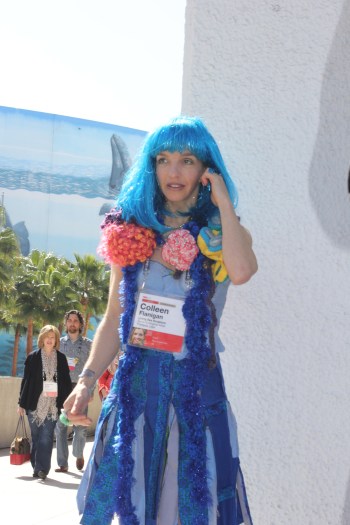
Comments (16)
Pingback: 4 Ways To Get People To Care About The Ocean - Gili Shark Conservation
Pingback: Elementor #9760 - Coral Catch
Pingback: 4 Ways To Get People To Care About The Ocean – Coral Catch
Pingback: 4 Ways To Get People To Care About The Ocean | Gili Shark Conservation
Pingback: The First 100,000 Funded Kickstarter Projects in 100 Numbers
Pingback: The First 100,000 Funded Kickstarter Projects in 100 Numbers | Welcome to GarySpirer.com
Pingback: The First 100,000 Funded Kickstarter Projects in 100 Numbers | National Crowdfunding Association of Canada
Pingback: 4 WAYS TO GET PEOPLE TO CARE ABOUT THE OCEAN | Life.
Pingback: Will you Crowdsource your Haircut?
Pingback: A Scrabble board of TED Fellows | Krantenkoppen Tech
Pingback: Colleen Flanigan crowdsourced her haircut at TEDGlobal | Krantenkoppen Tech
Pingback: Aquarium Tip Tank | Coral Growing Sculptures | Practical tips for enjoying your aquarium